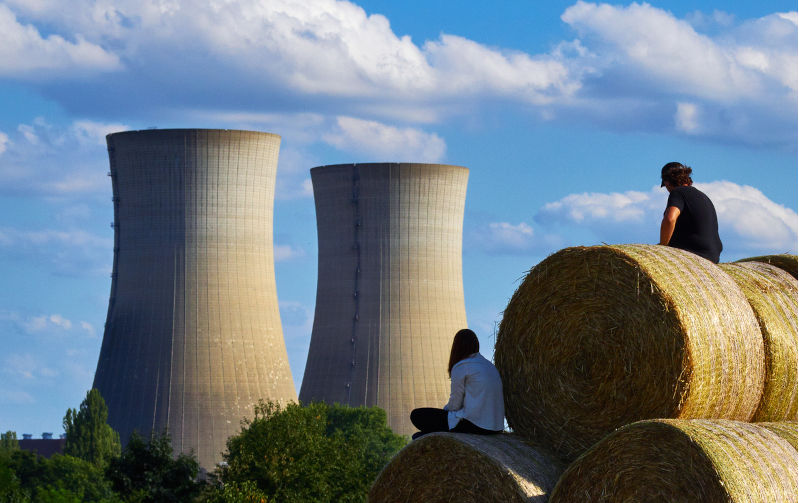There is a clear disconnect between the claims of the nuclear lobby and the real-world adverse consequences of nuclear energy. Communities, workers and indeed all Australians need accurate information about the health impacts.
Radiation causes damage to living cells, especially to our DNA. It is worse for women and worst of all for children.
Regions have heard a lot of misleading information about radiation and bananas.
Bananas do have tiny amounts of radioactive potassium which is excreted very quickly and so having very little effect. However radioactive elements from reactors, like Strontium, are stored in teeth and bones and continue to irradiate the body for years.
There is background radiation every day. But there is clear evidence the more you are exposed the greater the health issues.
The INWORKS study represents the gold standard of the extensive research into the health impacts of radiation.
This very detailed research examined more than 300,000 carefully monitored radiation industry workers for more than 30 years, followed to an average age of 70. Thus the delayed long-term effects had time to manifest themselves. This found not only increased cancers, but also surprisingly increases in heart attacks and strokes.
And these happened even at the lowest additional doses – there is no harmless lower level.
Indeed, why do you think every time you get an X-ray there are signs asking if you are pregnant?
We have known since the 1950s that X-raying an unborn child increases its risk of leukaemia and other cancers. When doctors order CT scans, they carefully weigh up the need vs. the risk, especially in children.
There has been concern and controversy for decades about childhood leukemia near nuclear reactors. In the 1980s, excess cases of leukaemia and lymphoma were noticed around the Sellafield reactor in England
A UK Government investigation unexpectedly found the risks for leukaemia and lymphoma were higher. In 2007, the US Department of Energy examined all of the reliable data available worldwide, confirming a significant increase in leukaemia for children living near nuclear power plants.
The clearest findings come from a large national German study, which examined their 16 operating nuclear plants over a 25-year period.
It showed more than double the risk of leukaemia for children living within five km of a nuclear plant. Nuclear proponents quote a UN study with an 80 km radius showing no harm, but the much larger area hides the risk for those living much closer.
At a national level, climate change would be made worse. The current proposal massively prolongs coal and gas usage, almost tripling emissions. Indeed, the whole nuclear fuel cycle, reactor building and decommissioning create major emissions, despite claims it is “emissions-free”.
Given the experience in the UK, US and France, the proposed timelines are nonsense, and emissions would be even greater.
We would have worse bushfires, worse floods, worse heat waves and worse droughts. These have major health impacts, especially for regional and remote communities. Internationally, there would be worse famines, forced displacements and conflicts.
And don’t forget nuclear power plants are themselves vulnerable to extreme weather events.
Water is a key issue. Renewable energy sources need much less water than reactors. Australia is a hot and dry country and water insecurity is increasingly a serious public health problem. When future droughts happen, will cooling reactors be prioritised over the needs of local people, agriculture and nature?
Catastrophic accidents do happen. In addition to Windscale, Chernobyl, Three Mile Island and Fukushima, there have been at least 15 accidents involving fuel or reactor core damage, and many near misses. Nobody will insure reactors for catastrophic accidents.
Nuclear reactors are also vulnerable to deliberate attack, as seen in Ukraine. Cyber-attacks or sabotage are also possible.
And then there is the waste. Highly toxic radioactive reactor waste must be isolated from the environment for more than 100,000 years.
Nobody wants this waste. In Australia, they have been searching for a waste site for over 40 years, without success.
We urgently need an honest discussion about the health impacts.
These include radiation exposures for communities and workers, the risks of accidents and deliberate damage to reactors, the potential for water insecurity and the generation of highly toxic radioactive waste.
Prolonging our dependency on coal and gas worsens climate change, and all the disasters that go with it.
From a public health perspective, this plan is totally unacceptable.

